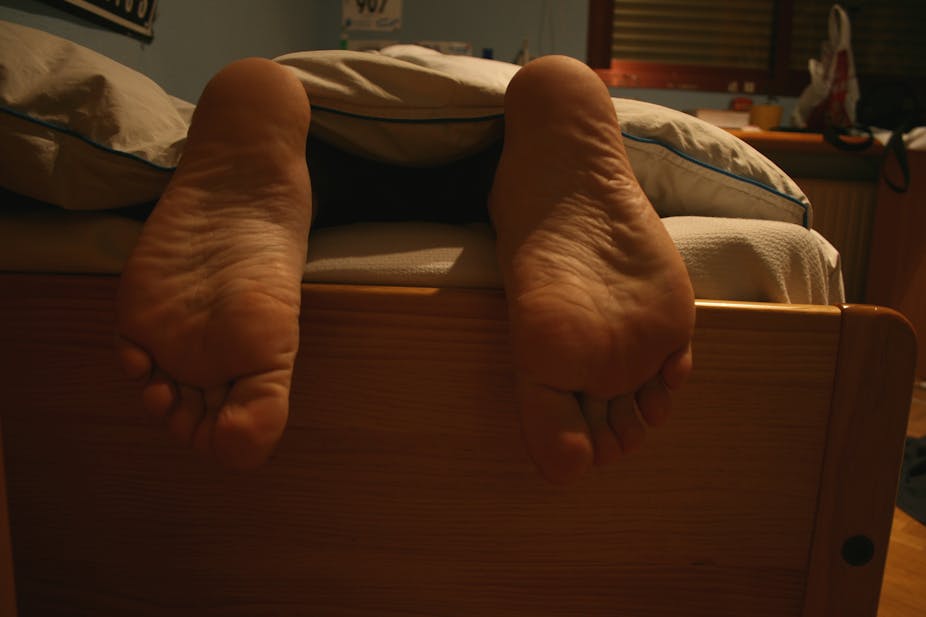Imagine being able to erase the innermost prejudices you are most ashamed of by simply turning on a sound machine before going to bed. It may sound fantastical, but a new study has shown that our biases can indeed be counteracted while we sleep.
Of course, most of us would contend that we are not racist or sexist. But many studies have shown that our actions suggest otherwise. For example, when evaluating applications for a science laboratory position, male applicants were viewed by university science faculty members as more hireable, competent and deserving of a high salary than identically qualified female applicants.
These biases are not surprising. We are often overwhelmed with information that can reinforce race and gender stereotypes.
Implicit association
In a new study, researchers built on our rapidly developing understanding of the way recent memories become ingrained in our mind during sleep. This “consolidation” process takes an unstable new memory and makes it stronger, and more resistant to forgetting, possibly changing its nature in the process.
The researchers were interested in whether implicit gender or racial biases – views that we are not necessarily aware of – could be manipulated. In order to assess people’s biases, they used an implicit association test (IAT). This requires people to make two category judgements by pressing one of two buttons. In a test of gender bias, for example, participants might categorise female faces by pressing one button and male faces with another. They would also have to classify words into “science” and “art” categories using the same keys.
People who implicitly associate women with art and men with science should respond relatively slowly when asked to use the same key for female faces and science words, compared with female faces and art words. There is debate about exactly what this test measures, but it has proved to be a revealing measure of attitudes in a wide array of research areas.
The researchers then tried to counter these biases by requiring the participants to make associations that reversed the stereotypes. For example, participants might be asked to identify only female faces that were paired with science words. These new associations were “tagged” in their memory by playing a particular sound when participants correctly identified the counterexamples. Another IAT showed weaker implicit biases after the interventions.

But showing an immediate effect of an intervention is not very useful if the benefits are short-lived. Here’s where the study got really interesting. Participants were asked to have a nap in the lab, while electrodes recorded their brain activity. When deep sleep was observed, one of the sound cues from the association test was repeatedly played.
The idea here is that the sound can reactivate the memories of the recent events and facilitate their consolidation. In effect, the researchers have found a way of picking out particular memories and asking the brain to give them special treatment during consolidation. Similar replay effects in sleep have been found by this group and others using both sounds and odours, and curiously the cueing effect of the sound is more effective during sleep than when people are awake. In this case, the replay was again effective: bias as measured by the IAT after sleep for the cued intervention was less extreme than the bias for the uncued intervention.
How far from clinical practice?
There are of course many more questions one might ask about this type of research. No-one is suggesting that biases developed over many years are going to be eliminated using a short intervention and then giving the natural consolidation process a helping hand. For a start, it is unclear how long such replay effects might last. The research included a test of implicit bias one week after the intervention, but although there was some evidence that the sounds did have a benefit at that point, the evidence was relatively weak.
Another key question is whether training on positive associations and then testing using the IAT is a form of teaching to the test. It would be really useful to know if such bias effects could lead to altered explicit attitudes – those that we are conscious of – and real behaviour change. A recent large-scale study of racial bias interventions showed clear benefits on the IAT but no change in explicit attitudes. However that was when tested straight after the intervention.
The intriguing possibility that the current study raises is that consolidation may lead to more generalised benefits. During sleep, the storage of recent memories spreads to different parts of the brain, and this systems-level consolidation may change the nature of the memory. Sleep has been shown to promote a shift from implicit to explicit knowledge, and work in our lab has found that sleep may lead to the integration of new memories with existing knowledge. Possibly the shift in implicit attitudes is just the starting point for a chain of consolidation processes that can lead to improved explicit representations of gender and racial stereotypes, and even changes in actions or verbal behaviour.
One of the most fascinating aspects of the current study is that it enhances our understanding of the neural mechanisms involved in memory formation and consolidation. It also offers an intriguing new take on the way in which prejudices and stereotypes form, and how they might be malleable. The hope for the future is that our understanding of prejudice and bias may be further benefited by a more unified understanding of these two areas.
However, for this to one day work as a reliable treatment for racism, sexism, or other bad habits we need to know much more about the longevity and generality of changes in implicit attitudes.

